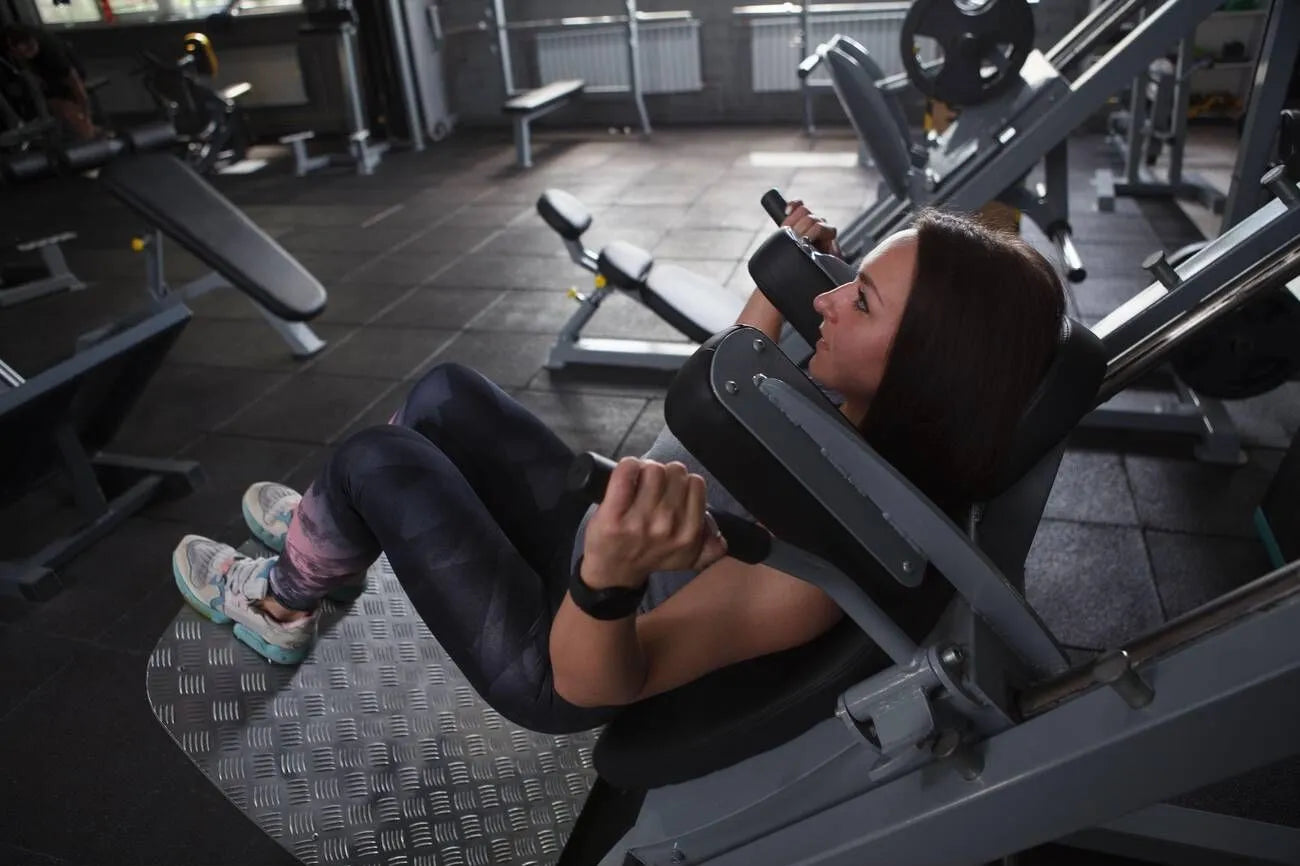How to Do The Hack Squat

Hack squats are a highly effective leg exercise that can help you develop strength and power in your lower body. Incorporating hack squats into your leg workout routine can provide numerous benefits and help you achieve your fitness goals. In this article, we will explore the basics of hack squats, including their definition, the muscles worked, and the differences between hack squats and traditional squats.

We will also discuss proper form and technique for performing hack squats, the advantages of using a hack squat machine, variations of hack squats, and how to incorporate hack squats into a comprehensive leg workout routine. Additionally, we will touch on safety considerations and provide personal training tips for optimal performance and injury prevention.
Basics of Hack Squats
Hack squats are a compound exercise that primarily targets the muscles in your legs, specifically the quadriceps, hamstrings, and glutes. They involve using a hack squat machine or a barbell to perform the movement, which allows for a more targeted and controlled workout. Unlike traditional squats, hack squats place more emphasis on the quadriceps, providing a unique and challenging stimulus for leg development. The hack squat exercise involves bending at the knees and lowering your body until your thighs are parallel to the ground or slightly below, and then lifting your body back up to the starting position.
How to Do the Hack Squat With Proper Form and Technique
To perform hack squats with proper form and technique, follow these steps:
1. Starting position and foot placement
Stand with your feet shoulder-width apart on the hack squat machine or with your feet slightly wider than shoulder-width apart if using a barbell. Position your toes slightly outward to engage your glutes and activate the muscles in your lower body.
2. Weight Placement
If using a hack squat machine, adjust the weight to an appropriate level for your fitness level. If performing barbell hack squats, load weight plates onto the barbell and secure them with collars to prevent them from sliding off during the exercise.
3. The Fixed Back Position
Position your back firmly against the backrest of the hack squat machine or maintain an upright torso if performing barbell hack squats. This fixed back position ensures that the movement is occurring at your knees and hips rather than your lower back.
4. The Barbell Hack Squat
If you are performing barbell hack squats, hold the barbell behind you, gripping it with an overhand grip and your hands slightly wider than shoulder-width apart.
5. Placement of Shoulder Pad and Gripping the Handles
If using a hack squat machine, adjust the shoulder pad to a comfortable height and place it on your upper back and shoulders. Grip the handles firmly to ensure stability during the movement.
6. Proper Depth and Range of Motion
Lower your body by bending at the knees and hips, keeping your back straight and your chest up. Aim to descend until your thighs are parallel to the ground or slightly below, and then push through your heels to rise back up to the starting position.
7. Maintaining Proper Posture and Knee Alignment
As you perform hack squats, it is essential to maintain proper posture and alignment to prevent injuries. Keep your knees aligned with your toes, and avoid letting them cave inward or extend beyond your toes. Additionally, engage your core muscles and maintain a neutral spine throughout the movement.
8. Common Mistakes to Avoid
Some common mistakes to avoid during hack squats include rounding your lower back, lifting your heels off the ground, and using excessive momentum to lift the weight. Focus on maintaining a slow and controlled movement while engaging the targeted muscles for optimal results.
Hack Squat Machine vs. Barbells and Other Variations
There are several variations of hack squats, including the use of hack squat machines, barbells, and alternative exercises. The hack squat machine offers certain advantages, such as providing additional stability and support, allowing for a more targeted workout, and decreasing strain on the lower back. These machines typically have a fixed range of motion, guiding the exerciser through the proper movement pattern.
On the other hand, barbell hack squats require more stabilization from the core and upper body. They allow for a greater range of motion and the ability to load heavier weights. However, proper form and technique are crucial to avoid strain on the lower back. It is recommended to start with a lower weight and gradually increase as you become more comfortable with the exercise.
Reverse hack squats, also known as negative hack squats, are an excellent variation for targeting different muscles in your legs. To perform reverse hack squats, simply face away from the machine or rack and lower your body using the same technique as regular hack squats. This variation places more emphasis on the hamstrings and glutes.
For individuals who do not have access to hack squat machines or barbells, there are alternative exercises that can still provide a similar stimulus. Goblet squats, bodyweight squats, Bulgarian split squats, and leg presses are effective alternatives for working the muscles targeted by hack squats. These exercises can be performed with different variations and intensities to suit individual needs and goals.
Incorporating Hack Squats into a Leg Workout Routine
Hack squats can play a significant role in developing lower body strength and power. Including them in your leg workout routine can lead to increased muscle mass, improved strength, and enhanced athletic performance. When incorporating hack squats into your leg workout, consider the following recommendations:
1. Sets, Reps, and Rest Periods
For beginners, start with 2-3 sets of 10-12 repetitions with a rest period of 1-2 minutes between sets. As you progress, you can increase the number of sets and/or repetitions to further challenge your muscles. Rest periods should be adjusted based on your fitness level and personal preferences.
2. Combining Hack Squats with Other Leg Exercises
To maximize the benefits of hack squats, it is essential to incorporate them into a comprehensive leg workout routine. Pairing hack squats with exercises such as leg presses, lunges, hamstring curls, and calf raises can provide a well-rounded leg workout that targets various muscle groups and movement patterns. Additionally, it is beneficial to alternate between exercises that focus on different muscles, allowing for adequate recovery and overall leg development.
Safety Considerations and Personal Training Tips
Prioritizing safety and proper technique are essential when performing hack squats or any exercise. Consider the following tips to ensure a safe and effective workout:
Proper warm-up and stretching: Before beginning your hack squats, it is crucial to warm up your muscles and prepare them for the exercise. Engage in light cardiovascular activity, such as jogging or cycling, to increase blood flow to your muscles. Additionally, perform dynamic stretches that target the muscles involved in hack squats, such as leg swings, walking lunges, and hip rotations.
Adjusting the Machine: If you are using a hack squat machine, it is crucial to adjust it to your individual body dimensions. Ensure that the shoulder pad is positioned comfortably on your upper back and shoulders, and adjust the seat height to allow for a full range of motion and proper alignment.
If you are new to hack squats or strength training in general, it is beneficial to seek guidance from a qualified personal trainer. A personal trainer can assess your fitness level, teach you proper form and technique, and create a customized workout plan that suits your goals and abilities. They can also provide valuable feedback and support to help you progress and avoid injuries.
Preventing Injuries and Maintaining Proper Form
Maintaining proper form and technique during hack squats is crucial to prevent injuries and ensure optimal muscle activation. One way to enhance your form and provide added support to the knees is by using knee sleeves for squats. These sleeves offer compression, which can help stabilize the knee joint, ensuring that it remains aligned correctly during the squat motion. They also provide a layer of protection, reducing the risk of strains or overextension. Avoid excessive bouncing or jerking movements, and focus on controlled and smooth movements throughout the exercise. If you experience any pain or discomfort , especially in the knee area, knee sleeves might offer some relief. However, always stop the exercise and consult a healthcare professional if pain persists.
Conclusion
In summary, hack squats are a highly effective exercise for developing leg strength and power. Incorporating hack squats into your leg workout routine can target the quadriceps, hamstrings, and glutes, leading to increased muscle mass and enhanced athletic performance. Whether you choose to perform hack squats using a hack squat machine or barbell, it is vital to prioritize proper form, technique, and safety. There are various hack squat variations, such as reverse hack squats, that can provide a unique stimulus for your leg muscles. Additionally, it is crucial to seek guidance from a personal trainer, especially if you are new to hack squats or strength training. By following these guidelines and incorporating hack squats into a comprehensive leg workout routine, you can achieve significant gains in leg strength and power. So, why wait? Start incorporating hack squats into your leg workouts and reap the benefits of this versatile and effective exercise.










